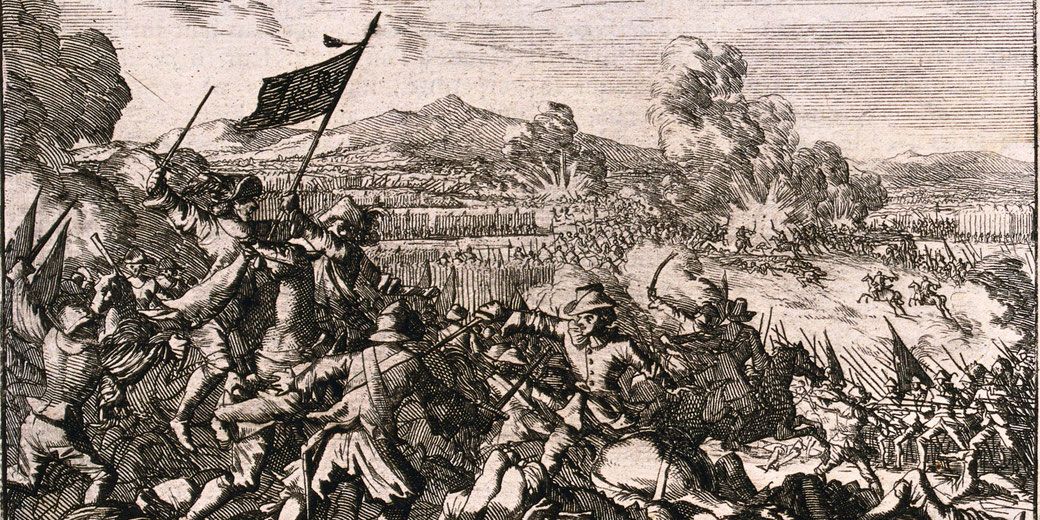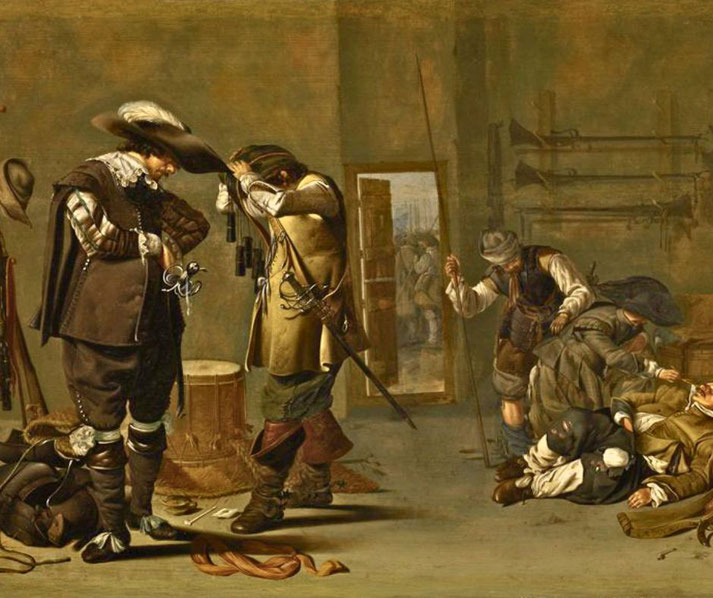Religion, bloodshed, and betrayal: How the Thirty Years' War tore Europe apart

The Thirty Years’ War was a severe conflict that swept across Europe from 1618 to 1648. It is often remembered as a brutal and important period in history, driven by religious passion, political goals and social unrest.
It changed the continent’s political divisions and had a lasting effect on its cultural and social rules.
What were the causes of the Thirty Years' War?
The Reformation, started by Martin Luther in 1517, had broken apart the once-unified Christian world.
This movement pitted Catholics against Protestants and led to several religious disputes.
By the early 17th century, the Holy Roman Empire, which consisted of many territories in Central Europe, became a centre of religious conflict. The Habsburgs were firm Catholics who tried to increase their power over the mainly Protestant German states.
The immediate trigger for the war came in 1618 with the Defenestration of Prague.
Protestant nobles threw Catholic Habsburg officials out of a window in Bohemia.
This event led to a wider conflict as other European powers tried to protect or expand their interests.
Spain joined the Habsburgs to keep its power in Europe. France, though Catholic, supported the Protestants to limit Habsburg influence.
Sweden and Denmark also joined the war. These Protestant countries acted to gain more influence in the region.
The political situation in Europe at the time involved many alliances and rivalries. Family dynasties often took priority over religious beliefs.
In the end, the war was a fight for land and political control.

Phase 1: Bohemia
The Thirty Years’ War unfolded in four main stages, each of which featured alliances and battle areas that shifted.
The Bohemian Phase (1618 to 1625) began with the Defenestration of Prague and saw the Catholic Habsburgs face the Protestant Bohemian nobles.
The Habsburgs won the Battle of White Mountain in 1620. They defeated the rebels and then took charge of the region.
Phase 2: Denmark
The Danish Phase (1625 to 1629) saw King Christian IV of Denmark, a Lutheran, enter the war to support the Protestants and limit Habsburg expansion.
However, the Catholic forces under General Albrecht von Wallenstein won the Battle of Dessau Bridge in 1626.
This victory defeated the Protestant army, which was led by Ernst von Mansfeld.
This outcome led to the Peace of Lübeck in 1629, which forced Denmark to leave the war.
Phase 3: Sweden
The Swedish Phase (1630 to 1635) introduced a new Protestant leader, King Gustavus Adolphus of Sweden.
His military tactics and clear victories changed the war in the Protestants’ favour.
At the Battle of Breitenfeld in 1631, Gustavus Adolphus used new tactics to defeat the Catholic League’s army.
However, Gustavus Adolphus died in 1632 at the Battle of Lützen. This setback affected the Protestant forces, although they still won that fight.
The war continued. The Battle of Nördlingen in 1634 was a significant victory for the Catholics and led to the Peace of Prague in 1635.
That treaty did not end the fighting.
Phase 4: France
The final phase, the French Phase (1635-1648), saw France, under Cardinal Richelieu who entered the war directly against the Habsburgs, despite being a Catholic country.
France's involvement was driven by political rather than religious motives, with the aim of weakening Habsburg control in Europe.
This phase was typified by widespread devastation, as armies crisscrossed the continent, and the conflict became a truly European war.
The French Phase of the war saw the Battle of Rocroi in 1643, where the French forces under the Duke of Enghien decisively defeated the Spanish army.
This signalled the decline of Spanish military control in Europe.
The bloody impact of the war on Europe
The war's relentless destruction and the movement of armies across the continent led to widespread famine, disease, and death.
Estimates suggest that the Holy Roman Empire lost between 25% and 40% of its population, with some regions experiencing even greater losses.
The war exacerbated the spread of diseases such as the plague and typhus, further decimating the population.
Agriculture, the backbone of the economy, was severely disrupted as fields were trampled, crops were burned, and livestock were slaughtered or stolen by passing armies.
Trade routes were interrupted, which led to a decline in commerce and the impoverishment of many urban centers.
The cost of the war, which was financed by heavy taxation and borrowing, left many states and principalities on the verge of bankruptcy.
The widespread destruction and loss of life eroded traditional social structures, which led to increased social mobility in some areas, but also to greater social unrest.
The conflict increased religious hatreds, which persisted long after the war's end.
Additionally, the war contributed to the decline of feudalism and the rise of absolutist states, as rulers centralized power in their efforts to rebuild and assert control over their devastated territories.

How the Thirty Years' War was finally ended
The Peace of Westphalia, a series of treaties which were signed in 1648, brought an end to the Thirty Years' War and marked a turning point in European history.
The negotiations took place in the cities of Münster and Osnabrück in the Holy Roman Empire, which involved representatives from various European states.
The peace treaties, together called the Peace of Westphalia, consisted of three main agreements:
- the Peace of Münster between the Spanish Empire and the Dutch Republic
- the Treaty of Münster between the Holy Roman Empire and France
- and the Treaty of Osnabrück between the Holy Roman Empire and Sweden
One of the most significant outcomes of the Peace of Westphalia was the recognition of the principle of state sovereignty.
The treaties affirmed the right of each state to govern its own affairs without external interference, laying the foundation for the modern system of nation-states.
The Peace of Westphalia also redrew the political map of Europe, with territorial adjustments that shifted the balance of power.
France gained territories in Alsace, Sweden acquired parts of Pomerania and other areas, and the Dutch Republic was formally recognized as independent from Spain.
Religiously, the Peace of Westphalia reinforced the principle of cuius regio, eius religio (whose state, his religion), which allowed rulers to determine the official religion of their territories.
This provision extended legal recognition to Calvinism alongside Lutheranism and Catholicism, which contributed to the establishment of religious pluralism in Europe.
The Peace of Westphalia is often cited as the beginning of the modern international order because it established norms and principles that continue to influence the conduct of international relations, including the concepts of state sovereignty, non-interference, and diplomatic immunity.
Further reading
What do you need help with?
Download ready-to-use digital learning resources
Copyright © History Skills 2014-2025.
Contact via email
With the exception of links to external sites, some historical sources and extracts from specific publications, all content on this website is copyrighted by History Skills. This content may not be copied, republished or redistributed without written permission from the website creator. Please use the Contact page to obtain relevant permission.





